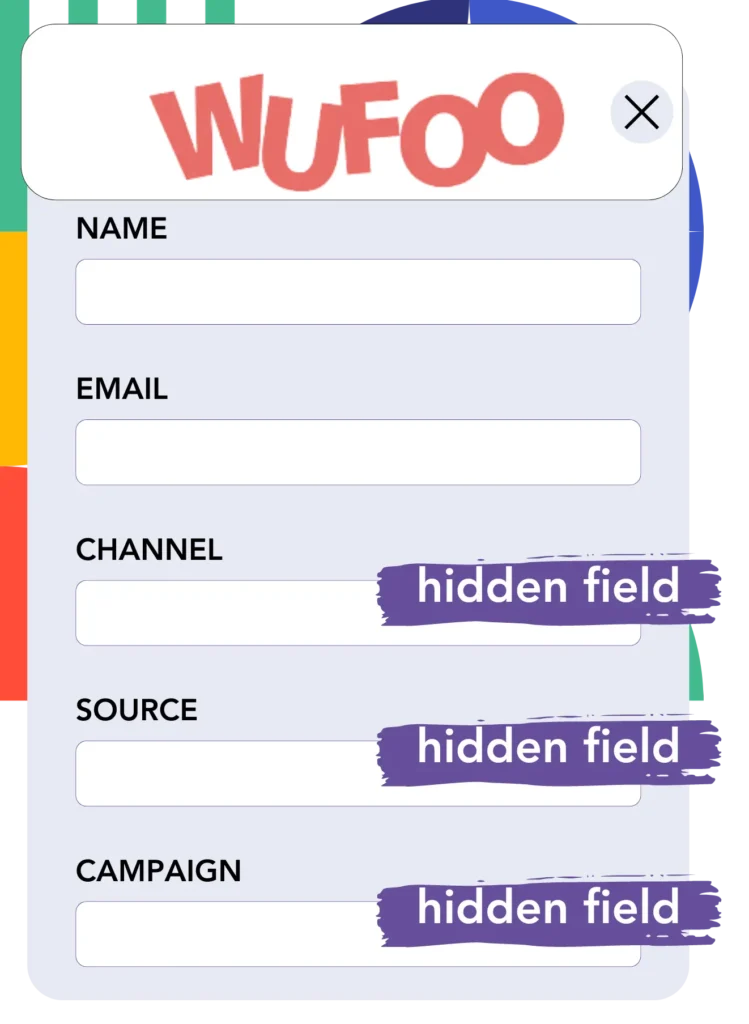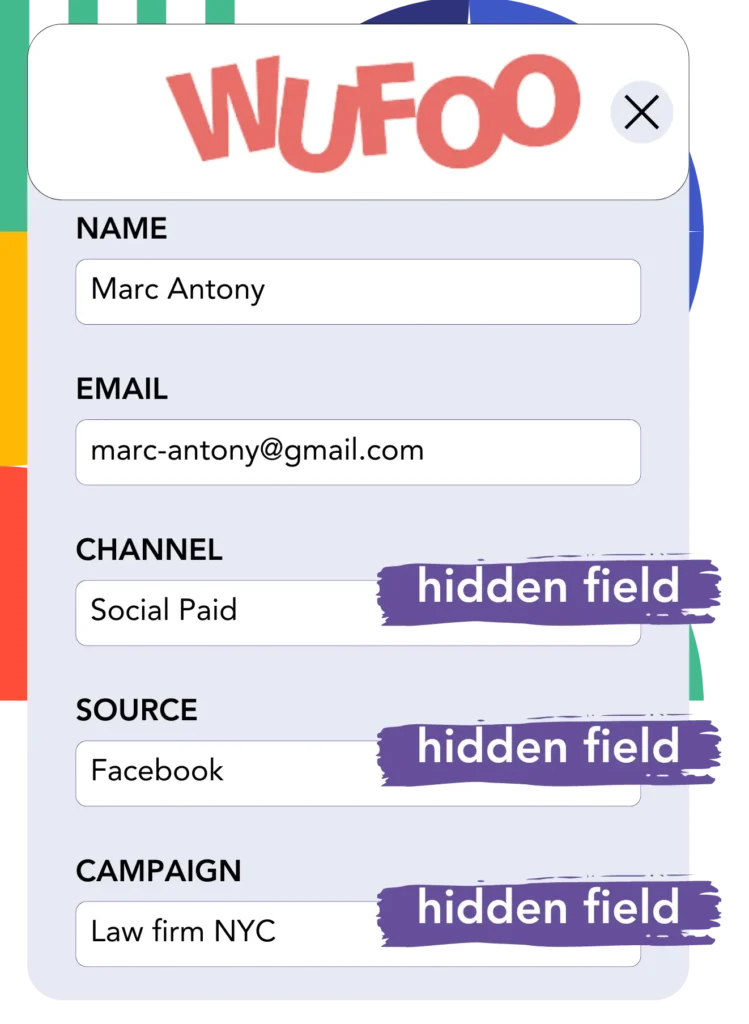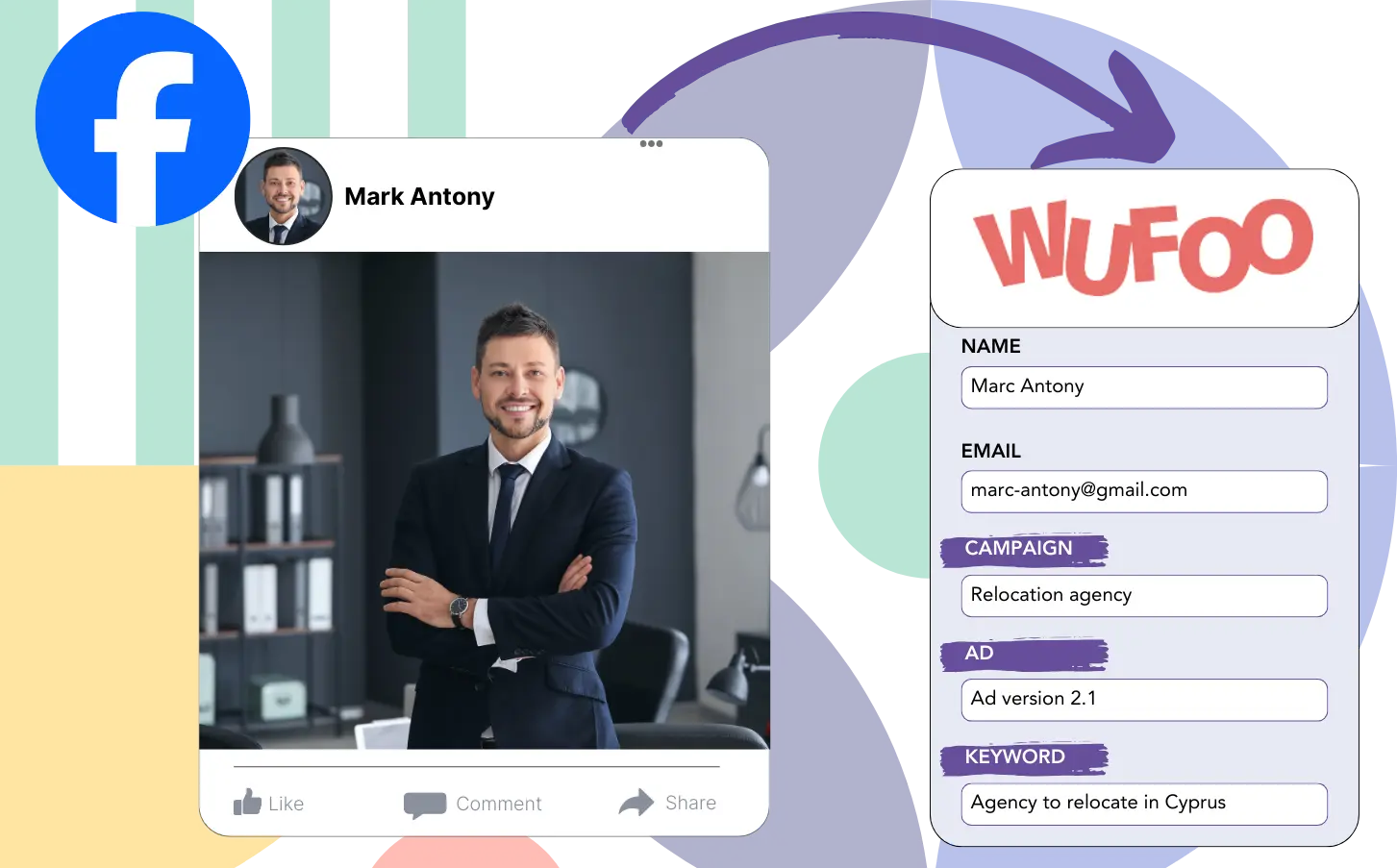Ineffective ad tracking can lead to wasted budget resources.
This can make it challenging to understand where your leads are coming from.
Without this knowledge, you can’t accurately assess the effectiveness of your advertising efforts.
Leadsources identifies which ads convert into leads.
Leadsources tracks data for each Ad Set (campaign, Ad Set, audience, ad).
With Wufoo, you can save extensive data on your Facebook ads, covering campaign, Ad Set, audience, and ad details for each lead.
Running reports, for instance, “Top audiences by lead generation,” helps you choose which audiences to promote further or drop.
Let’s examine this further!
Capture Facebook ads in Wufoo
Step 1: Add Leadsources in the head tag of your website

Sign up to Leadsources.io, and benefit from our 14-day free trial.
Add the Leadsources tracking code to the head section of your website.
Simply follow this easy step-by-step guide.
Step 2: Add the UTM parameters to your Facebook ads campaigns

Include the UTM parameters in every Facebook ad campaign (campaign, ad set, audience, ad) you run.
Consider adding these UTM parameters to the links used in your Facebook ads:
- UTM_source
- UTM_campaign
- UTM_term
- UTM_content
Keep in mind that Leadsources captures detailed lead source data, including channel, landing page, and landing page subfolder, without needing UTM parameters for a full picture of your lead sources.
Step 3: Add the hidden fields in Wufoo

When a user completes your Wufoo, Leadsources automatically enters Facebook ads data like campaign, ad set, audience, and ad into the hidden fields.
Refer to our complete guide for adding hidden fields in Wufoo to finish setting up.
Facebook ads data is recorded directly into your Wufoo by Leadsources (check Step 4).
Step 4: Capture the Facebook ads data in Wufoo

Leadsources captures Facebook ads data like campaign, ad set, audience, and ad when someone clicks on your ad and lands on your site.
Leadsources adds Facebook ads data to the hidden fields of your Wufoo without manual input.
The Facebook ads data, along with the form responses, is sent to the Wufoo submissions page each time the form is submitted.
How does Leadsources work?
When you add the Leadsources tracking code to the head tag of your site, it records Facebook ads data, including campaign, ad set, audience, and ad, each time someone visits your site.
The data from Facebook ads is placed into the hidden fields of your Wufoo.
Leadsources is set to collect these types of visitor data:
- Channel
- Source
- Campaign
- Content
- Term
- Landing page
- Landing page subfolder
This enables you to keep an eye on essential lead source details even if UTM parameters aren’t used, like when traffic comes from organic sources such as:
- Google Search
- Instagram bio link
- Social media posts
- Etc.
While many tools require UTM parameters to capture lead data, Leadsources functions effectively even without them.
Consequently, Leadsources monitors lead data from all channels, unlike other tools:
- Organic Search
- Paid Search
- Organic Social
- Paid Social
- Referral
- Affiliate
- Display Advertising
- Direct Traffic
This process ensures that all lead source data is unified and tracked in one location.
Pro tip:
Track Facebook Ads data in all the popular online form builders, including Cognito Forms, Gravity Forms, Jotform, Typeform, WPForms, and more. For all other form builders, refer to our guide on How to track Facebook Ads data in your online form.
How to run performance reports
Since your Facebook ads data is now in Wufoo, you can produce performance reports like:
- Leads per campaign
- Leads per Ad set
- Leads per audience
- Leads per ad
- Etc.
This allows you to make smarter choices regarding your Facebook ads budget.
Here are the different types of reports you can make.
Lead performance reports
Reports can reveal the volume of leads produced by:
- Channel
- Campaign
- Ad set
- Audience
- Ad
- Landing page
- Landing page subfolder
Example #1
Data from campaigns in channels such as SEO, PPC, and email can be exported to make a report titled “Leads by Channel.”

Example #2
When you determine the leading channel, for example, Facebook ads, you can look at it to view leads from each individual campaign.

Example #3
When you determine the campaign with the highest number of leads, you can look into which audience, ad set, or ad is contributing to these results.

Sales performance report
While knowing which ads and audiences produce the most leads is valuable, do they also lead to higher revenue?
When you import Wufoo data into a CRM like GoHighLevel, you can produce detailed sales reports.
Example:
| Channels | Search Paid | Social Paid |
| Leads | 50 | 75 |
| Sales | 5 | 6 |
| Average order value | $150 | $100 |
| Revenue | $750 | $600 |
The data from your ads on Google and Facebook indicated that Social Paid ads generated a higher number of leads than Search Paid ads.
Your analysis revealed that the Search Paid channel achieved greater revenue with fewer leads than the Social Paid channel.
LeadSources tracks the source of each lead in Wufoo, whether they come from ads, organic search, social, email, etc. and syncs that data with each submission. See the full breakdown on the lead source in Wufoo page.

